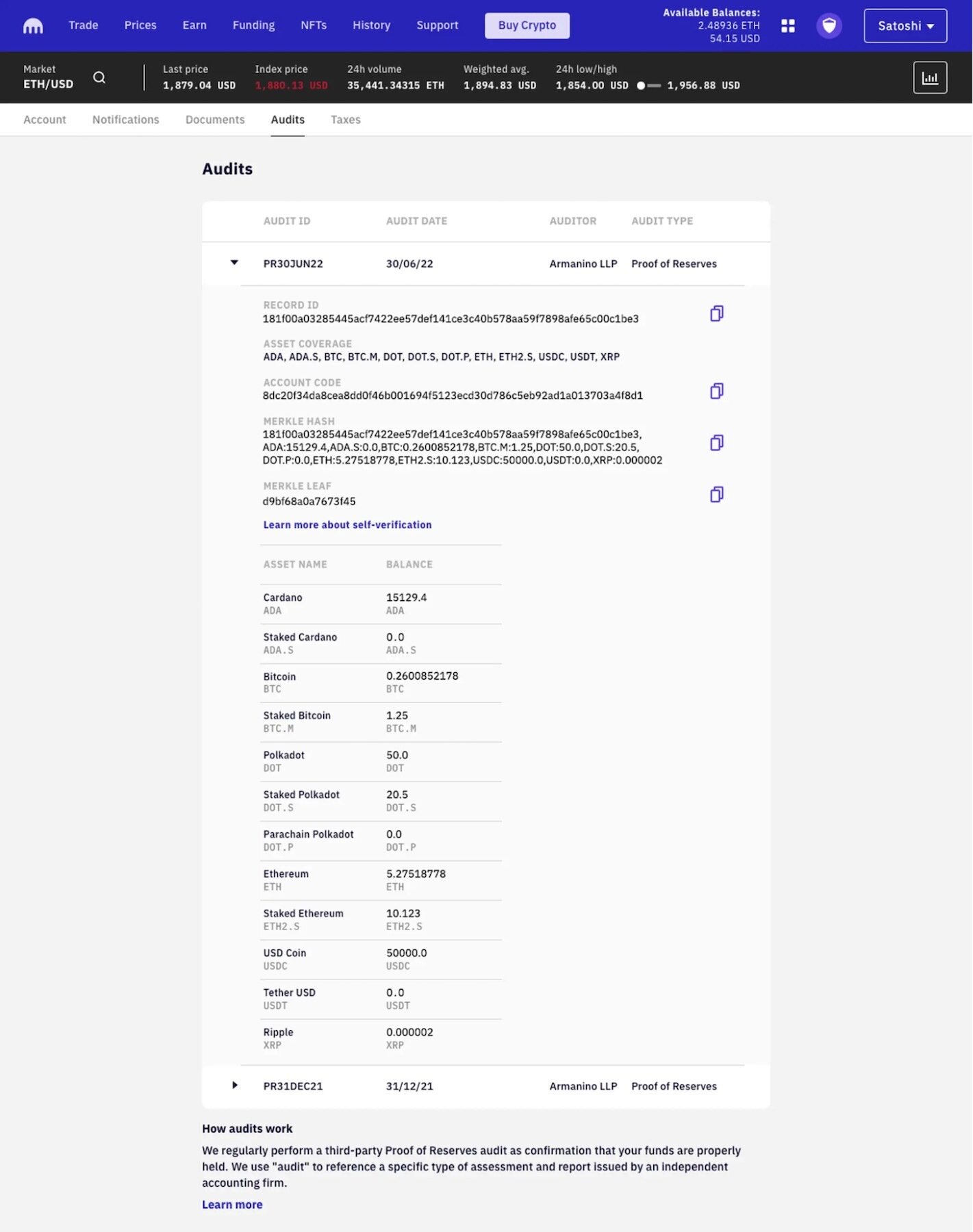- >News
- >What is Proof of Reserves on Kraken? How to Verify Your Balance
What is Proof of Reserves on Kraken? How to Verify Your Balance
Though it became a hot topic following the collapse of FTX exchange, Kraken has long offered users proof of reserves for their holdings.
It should perhaps be no surprise considering the platform’s decade long experience and focus on security that they also conduct semi-annual proof of reserves audits. In this guide, we’ll first talk about how proof of reserves works before showing you how to verify your balance on Kraken in a step by step guide. Let’s get into it.
What is Proof of Reserves?
Proof of Reserves (PoR) is an audit conducted by a third-party that verifies whether a company or exchange holds the assets it claims to on behalf of their clients. In light of the collapse of FTX Exchange, which evidently didn’t have anywhere close to the reserves required to cover their customers’ holdings, this has become a necessity for cryptocurrency exchanges.
Apart from proving the overall platform is solvent, proof of reserves can and is being implemented on an individual level, which is what you can do on Kraken. This means that individual account holders on Kraken can verify that the exchange has their specific funds covered. Proof of reserve audits need to be conducted on a regular basis to ensure their accuracy, as assets could easily be moved out of the reserve otherwise.
A PoR auditor takes an anonymized snapshot of all balances held by Kraken and aggregates them into a Merkle tree. A Merkle tree is a privacy-friendly data structure that encapsulates all client balances. From there, the auditor obtains a Merkle root, which is a cryptographic fingerprint that uniquely identifies the combination of these balances at the time when the snapshot was created. The auditor then collects proof of ownership from Kraken, with publicly verifiable balances. Finally, the auditor compares and verifies that these balances exceed or match the client balances represented in the Merkle tree, and therefore that Kraken’s clients’ assets are held on a full-reserve basis.
Step by Step Guide to Verifying Your Balance on Kraken
It’s easy to verify your balance on Kraken by following the step by step guide below!
1. Log in to your Kraken account
2. Navigate to your account settings (see image below)
3. Click “Audits” in the header shown below.
4. You will then see the below screen, which will have all the recent audits, the date they were done, and the auditor.
5. Click the audit date you want to verify. Here, you will find confirmation of the audit type, your Record ID (specific to your Kraken account and this particular audit), the assets that were verified, and your asset balances at the time of the audit.
6. The next step is to copy the Record ID and head to the auditor’s website (which varies).
7. Enter the Record ID into their portal. The auditor’s website will use the Record ID to find the balances of cryptocurrency held in your account on-chain at the time of the audit.
8. That’s it! You can verify that the numbers they had are the numbers shown in your account.
Closing Thoughts: Better Safe Than Sorry
In both the collapse of FTX, and the 2008 financial crisis, there was a lack of transparency by the companies involved. Had you and other customers been able to see with your own eyes the financial standing and transactions being made by these companies, it likely would have affected your decision to invest with them.
Proof of reserves has become a way to help ensure that a business isn’t a Ponzi scheme or some other type of scam, in an effort to shield customers from risk, and is a welcome sight in the sector.





